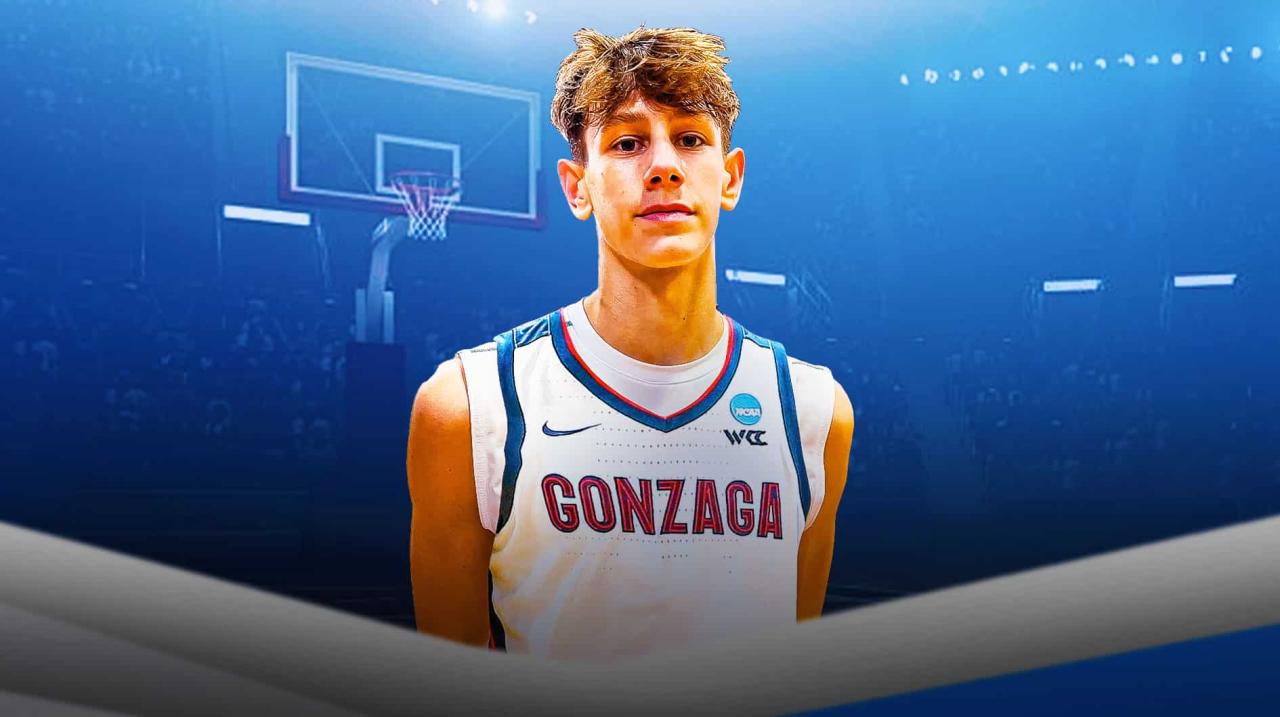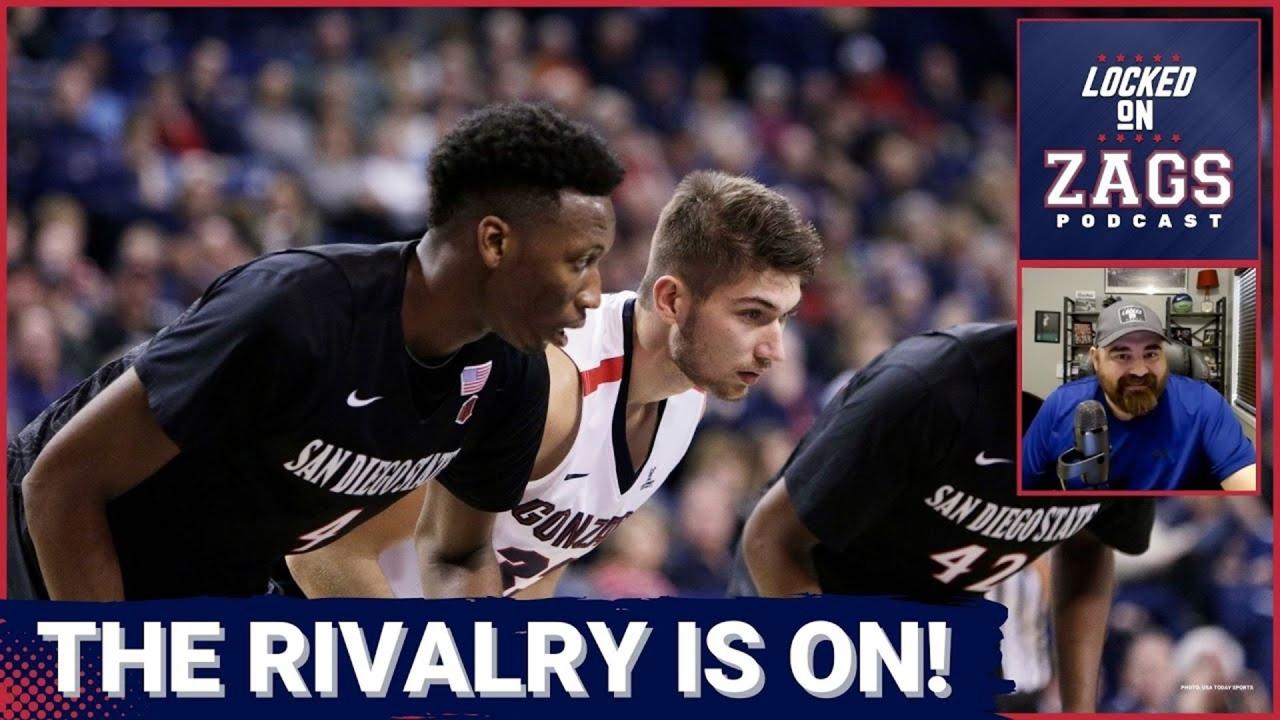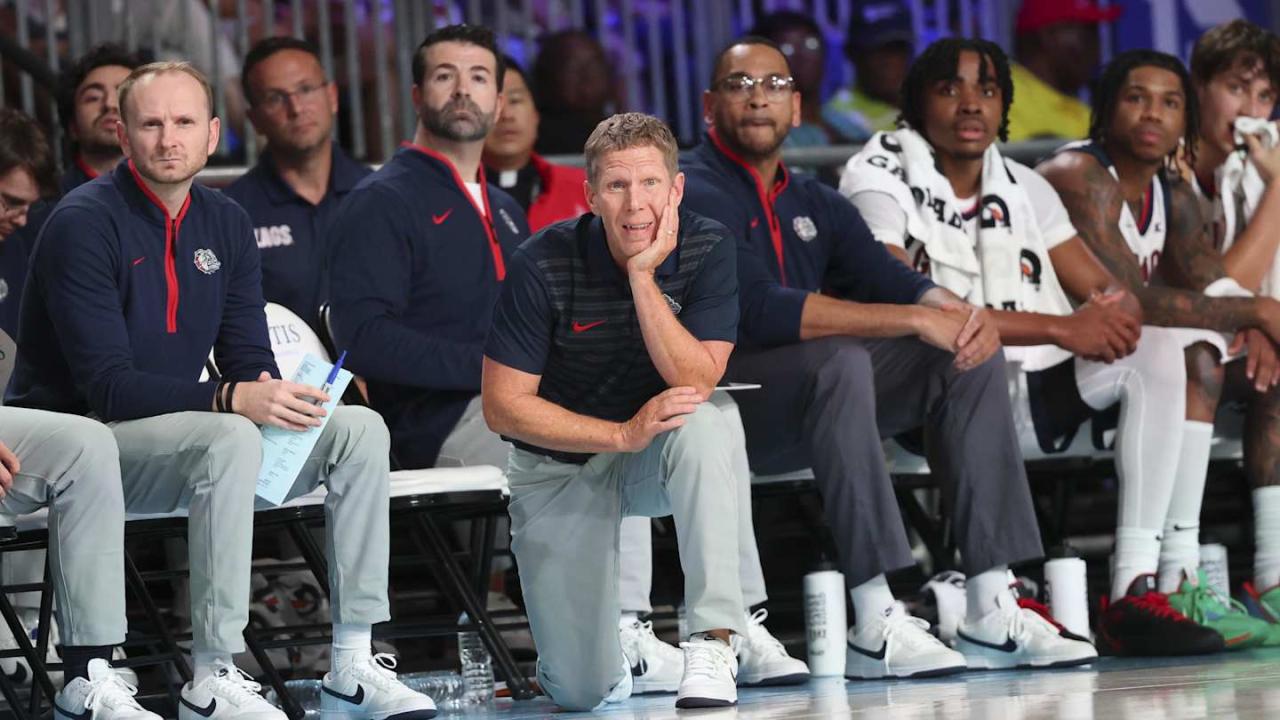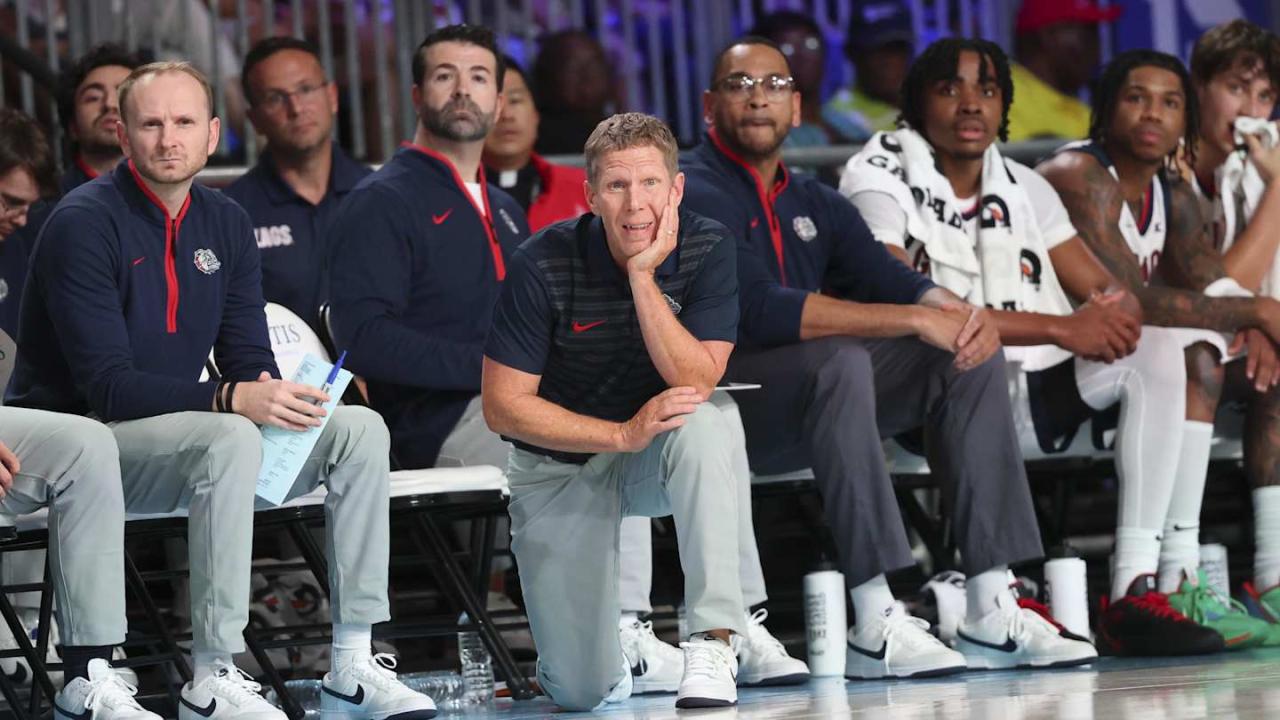Gonzaga basketball plane travel isn’t just about getting the team to games; it’s a complex operation involving logistics, safety, cost, and public perception. This deep dive explores the history of the Bulldogs’ air travel, the specifics of their aircraft, the safety measures in place, the financial aspects, and the environmental impact of their choices. We’ll look at everything from the type of plane they use to the potential PR benefits and drawbacks of private air travel for a college basketball team.
From scheduling flights around a demanding season to ensuring the well-being of players and staff, the team’s travel arrangements are a fascinating look behind the scenes of college basketball. We’ll examine the costs involved, comparing chartered flights to commercial options, and consider the sustainability of this method of travel. Get ready for a comprehensive look at the world of Gonzaga basketball and its airborne adventures.
So, you’re interested in the Gonzaga basketball team’s travel arrangements, huh? Their plane probably isn’t as flashy as the coordinated light shows you see in some places. For example, check out the amazing spectacle of the china new year’s drone show ; it’s a whole different level of coordinated movement. But back to Gonzaga – I bet their team bus is way more practical for everyday travel than a massive drone swarm!
Gonzaga Basketball Team Travel: A Deep Dive: Gonzaga Basketball Plane

The Gonzaga Bulldogs basketball program enjoys a national reputation for excellence on the court. Off the court, their travel arrangements reflect this high standard, utilizing chartered flights for efficient and comfortable team transport. This article explores the various facets of Gonzaga’s basketball team travel, from the historical use of chartered flights to the logistical considerations, safety protocols, and the broader implications of this travel method.
Gonzaga Basketball Team Travel History
Gonzaga’s reliance on chartered flights for its basketball team is a well-established practice, evolving alongside the program’s increasing national prominence. While precise historical records detailing the exact year of transition to primarily chartered flights may be limited publicly, it’s safe to say that as the team’s success grew and its travel schedule expanded to include more distant locations, the need for greater control and efficiency over travel logistics led to the adoption of chartered flights.
This provided a more streamlined experience compared to the complexities of coordinating numerous commercial flights for a large team.
Significant travel events have likely included trips to major tournaments like the NCAA tournament, requiring flights across the country. The logistical challenges of arranging these trips include coordinating flight schedules to align with game times and practice schedules, managing player and staff travel documents, and ensuring appropriate ground transportation at each destination. Crew considerations involve hiring experienced pilots and flight attendants familiar with the needs of a large traveling party, including potential dietary requirements and any medical needs.
A hypothetical travel schedule for a typical season might include flights to various West Coast conferences, cross-country trips for marquee matchups, and, of course, postseason tournament travel. For instance, a West Coast conference game might involve a short flight of approximately one to two hours, whereas a trip to play a top-ranked opponent in the East could easily entail a five to six-hour flight.
The scheduling must account for sufficient time for travel, practice, rest, and recovery.
So, you’re curious about the Gonzaga basketball team’s travel plans, right? Thinking about their chartered plane and all that? Well, it got me thinking about high-stakes situations, which reminded me of the intense survival games in the show, squid game histoire vraie , and how those games contrast sharply with the pressure of a college basketball game.
But back to Gonzaga – I bet their plane is pretty comfy compared to whatever those Squid Game contestants had!
The Plane Itself: Specifications and Features
Gonzaga likely utilizes mid-size to large-capacity jets for team travel, prioritizing comfort, space, and sufficient range to cover the extensive distances required for a national-level college basketball program. The specific aircraft model might vary depending on the trip’s length and the number of personnel traveling.
A typical aircraft might boast a passenger capacity of 50-100, offering ample seating for players, coaches, staff, and support personnel. The range would need to be substantial, easily covering transcontinental flights. Amenities might include comfortable seating, in-flight entertainment, and potentially dedicated spaces for team meetings or rest.
| Aircraft Type | Passenger Capacity | Range (Approximate) | Amenities |
|---|---|---|---|
| Boeing 737-700/800 | 100-180 | 2,000-3,000 nautical miles | In-flight entertainment, ample baggage space |
| Airbus A319/A320 | 100-150 | 2,000-3,500 nautical miles | Similar to Boeing 737, possibly more modern interiors |
| Bombardier Challenger 600 series | 8-16 | 4,000+ nautical miles | Luxury seating, private cabins, potentially a galley |
| Gulfstream G550 | 12-19 | 6,750 nautical miles | High-end luxury features, potentially multiple cabins |
The interior likely features comfortable seating arranged to maximize space and facilitate team interaction. It’s plausible that there might be dedicated areas for players to rest or strategize, perhaps even a small area for media or administrative work. The overall design would prioritize both comfort and functionality for a large traveling group.
Safety and Maintenance Procedures
Safety is paramount in Gonzaga’s travel arrangements. Rigorous safety protocols are implemented, likely exceeding minimum regulatory requirements. These protocols would include pre-flight inspections, adherence to FAA regulations, and possibly additional safety measures specific to the team’s needs.
Maintenance schedules and inspections follow strict guidelines, with regular checks and servicing performed by certified maintenance personnel. The frequency of these checks would likely align with or exceed the standards set by the aircraft manufacturer and relevant aviation authorities. Safety standards for chartered flights used by sports teams are typically very high, often surpassing those of commercial airlines due to the higher level of control and customized safety measures that can be implemented.
A pre-flight safety inspection checklist for a Gonzaga basketball team charter might include checks of all safety equipment, emergency exits, engine functionality, fuel levels, and a thorough review of the flight plan and weather conditions. The checklist would be meticulously followed before every flight.
Cost and Funding of Team Travel

Funding for Gonzaga’s team travel likely comes from a combination of sources, including the athletic department’s budget, booster donations, and potential revenue generated by the basketball program itself. Chartering a plane for a season involves significant costs, encompassing pilot and crew salaries, fuel, maintenance, airport fees, and insurance.
Estimating the cost of chartering a plane for a typical season is challenging without specific details on aircraft type and flight schedules. However, it’s safe to say it would be substantially higher than using commercial flights. The cost-effectiveness depends on several factors, including the number of flights, distance traveled, and the availability of suitable commercial flight options. While chartering is more expensive per flight, it can offer greater efficiency and control, potentially saving time and reducing the overall logistical burden.
A budget breakdown might include categories like aircraft rental, pilot and crew salaries, fuel costs, airport fees, insurance, ground transportation, and miscellaneous expenses. Each category would have its own associated costs, varying depending on factors such as flight duration and location.
Public Perception and Media Coverage, Gonzaga basketball plane
The use of a private plane for team travel can significantly impact the public perception of the Gonzaga basketball program. It can be viewed as a symbol of success and financial stability, projecting an image of a well-resourced and organized program. Conversely, it could also attract criticism regarding the program’s spending, particularly if there are concerns about financial transparency or resource allocation within the university’s athletic department.
Media coverage of Gonzaga’s travel arrangements has likely varied, with some outlets focusing on the logistical aspects and efficiency, while others might highlight the cost or potential environmental impact. The program’s public image management likely involves careful consideration of how its travel practices are portrayed in the media.
- Potential PR Benefits: Demonstrates success and financial stability, projects an image of professionalism and organization, enhances team morale and comfort, allows for more efficient travel schedules.
- Potential PR Drawbacks: Potential for criticism regarding spending and resource allocation, environmental concerns associated with private jet travel, perceived elitism or disconnect from the university’s broader community.
Environmental Impact of Team Travel
The environmental impact of using private jets for sports team travel is a significant concern. Private jets have a considerably higher carbon footprint per passenger than commercial flights due to lower passenger occupancy and less fuel-efficient engine technology. The carbon footprint of a typical Gonzaga basketball team flight would depend on the aircraft type, flight distance, and passenger load.
Compared to commercial flights, private jets generate significantly more greenhouse gas emissions per passenger. This is due to a combination of factors, including the higher fuel consumption per passenger and the lower occupancy rate typical of private flights. To mitigate the environmental impact, Gonzaga could explore alternative, more sustainable travel options, such as carbon offsetting programs, using more fuel-efficient aircraft, prioritizing shorter flights when feasible, or even exploring the use of ground transportation for shorter distances.
Summary

The Gonzaga basketball plane story highlights the intricate details behind seemingly simple aspects of a successful college sports program. From meticulous planning and safety protocols to financial considerations and public perception, the team’s travel arrangements offer a unique perspective on the dedication and resources required to compete at the highest level. Understanding the complexities of their travel reveals the significant investment made in ensuring the team’s success both on and off the court, leaving a lasting impression on the team, its fans, and the broader college basketball landscape.
Detailed FAQs
What type of plane does Gonzaga typically use?
So, you’re curious about the Gonzaga basketball team’s travel arrangements? Their plane’s probably pretty sweet, right? Think about the scale – it’s nothing compared to the massive coordinated spectacle you’d see at the china new year drone show 2033 , though. Imagine the logistics of managing that many drones! Getting the Zags to their games is a breeze compared to orchestrating something like that; it’s a whole different level of complexity.
While the exact model varies, Gonzaga usually charters a mid-size jet capable of accommodating the entire team and staff comfortably.
How are the flights funded?
Funding likely comes from a combination of athletic department budgets, booster donations, and potentially sponsorships.
What about player comfort on the plane?
The planes are typically equipped with comfortable seating, possibly in-flight entertainment, and amenities to ensure a relaxing travel experience for the players.
Do they have any specific safety procedures in place?
Yes, they likely adhere to rigorous safety checks and protocols before each flight, exceeding standard commercial airline requirements.
